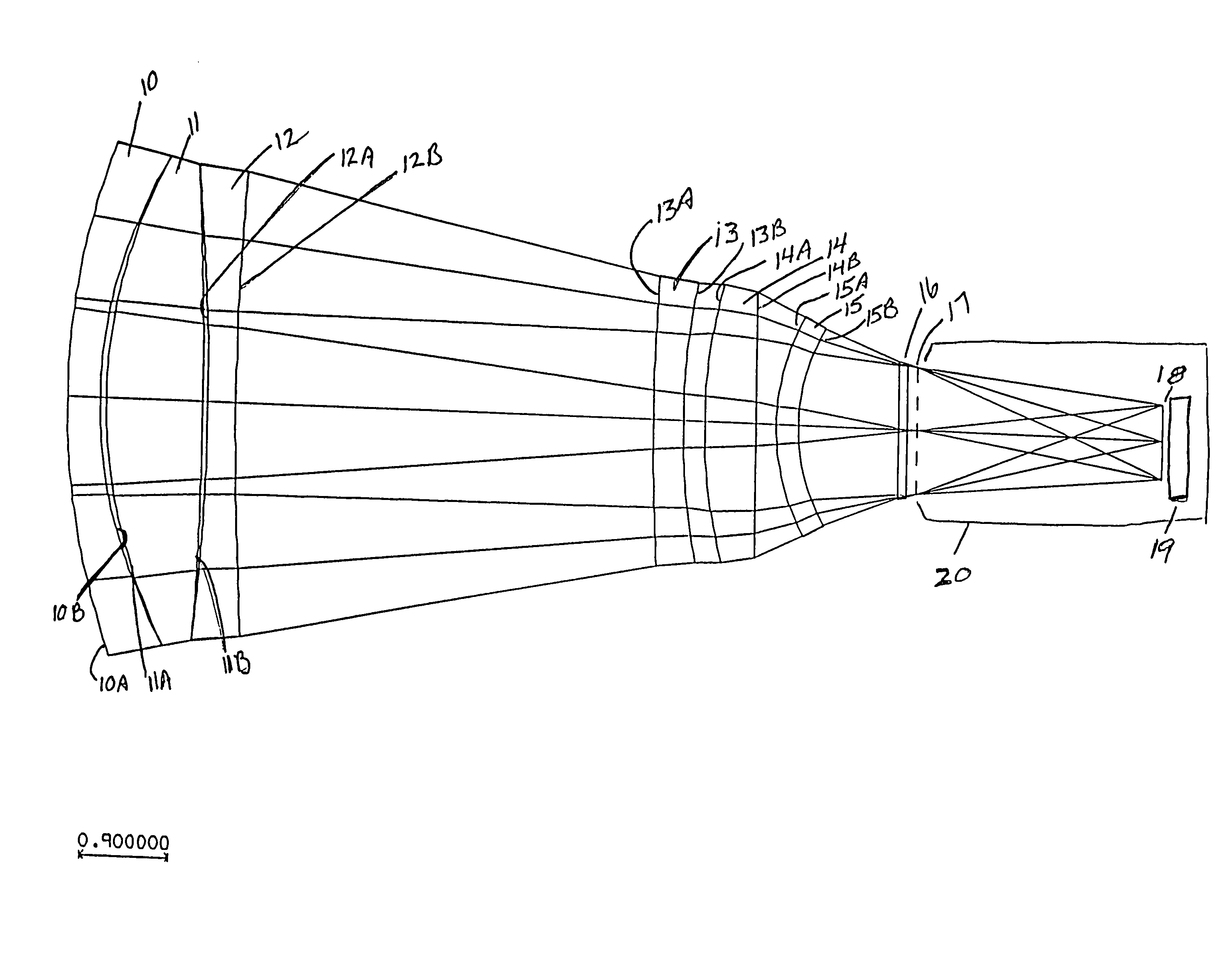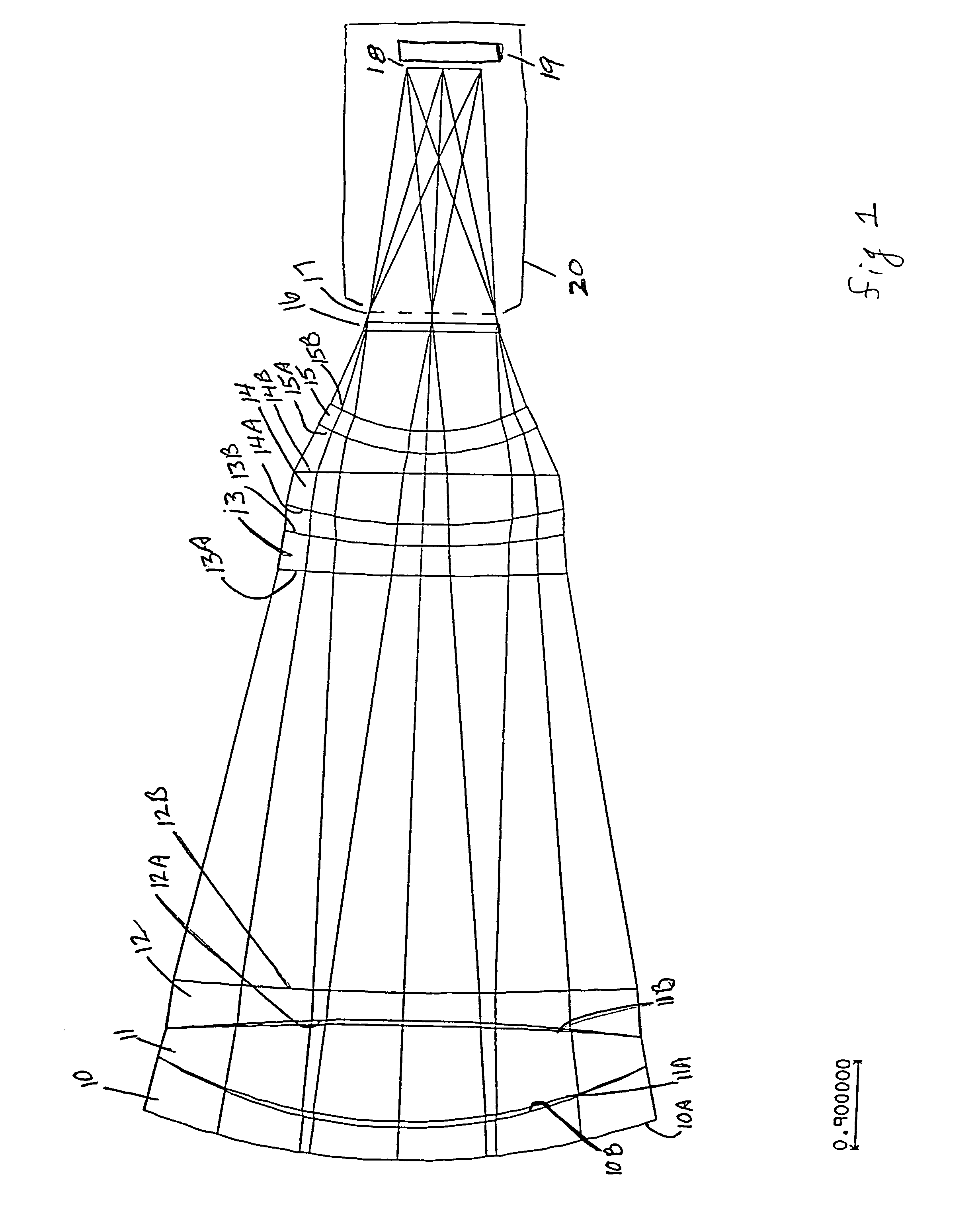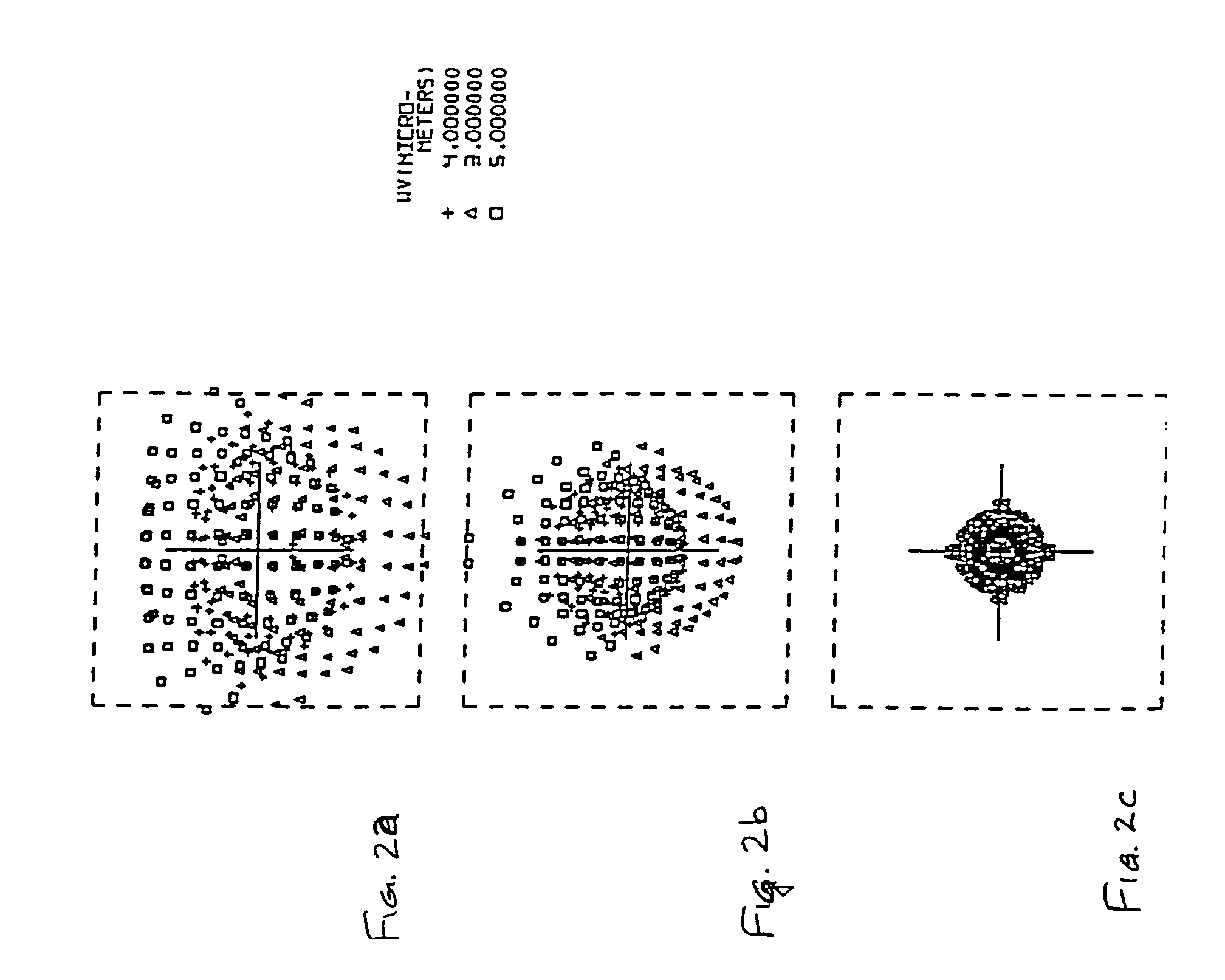Dual infrared band objective lens
a dual-infrared band and objective lens technology, applied in the field of objective lens system, can solve the problems of limiting modulation transfer function (mtf), large physical size, and large physical field of view of reflective optics system, and achieves excellent broad band color correction, easy production, and high reliability.
- Summary
- Abstract
- Description
- Claims
- Application Information
AI Technical Summary
Benefits of technology
Problems solved by technology
Method used
Image
Examples
Embodiment Construction
[0018]The index of refraction of optical materials varies with wavelength. The refractive index is generally higher at shorter wavelengths so that light converges faster (the focal length is shorter) than at longer wavelengths. This spread in the focal position over a spectral range is the primary chromatic aberration called axial color. It is relatively easy to correct the axial color aberration in either the 3-5 or the 8-12 micrometer spectral range by simply combining low and high dispersion elements and dividing the magnification power of the lens system among positive and negative lens elements. Color correction of both bands is much more difficult.
[0019]The present inventor has discovered a unique combination of lens powers, including an aspheric surface, and materials that yield color correction for both spectral bands simultaneously. The type of lens and the materials are, in order of their appearance along a chief ray of a focal optical lens system, as follows:
[0020]
LensMat...
PUM
 Login to View More
Login to View More Abstract
Description
Claims
Application Information
 Login to View More
Login to View More - R&D
- Intellectual Property
- Life Sciences
- Materials
- Tech Scout
- Unparalleled Data Quality
- Higher Quality Content
- 60% Fewer Hallucinations
Browse by: Latest US Patents, China's latest patents, Technical Efficacy Thesaurus, Application Domain, Technology Topic, Popular Technical Reports.
© 2025 PatSnap. All rights reserved.Legal|Privacy policy|Modern Slavery Act Transparency Statement|Sitemap|About US| Contact US: help@patsnap.com



